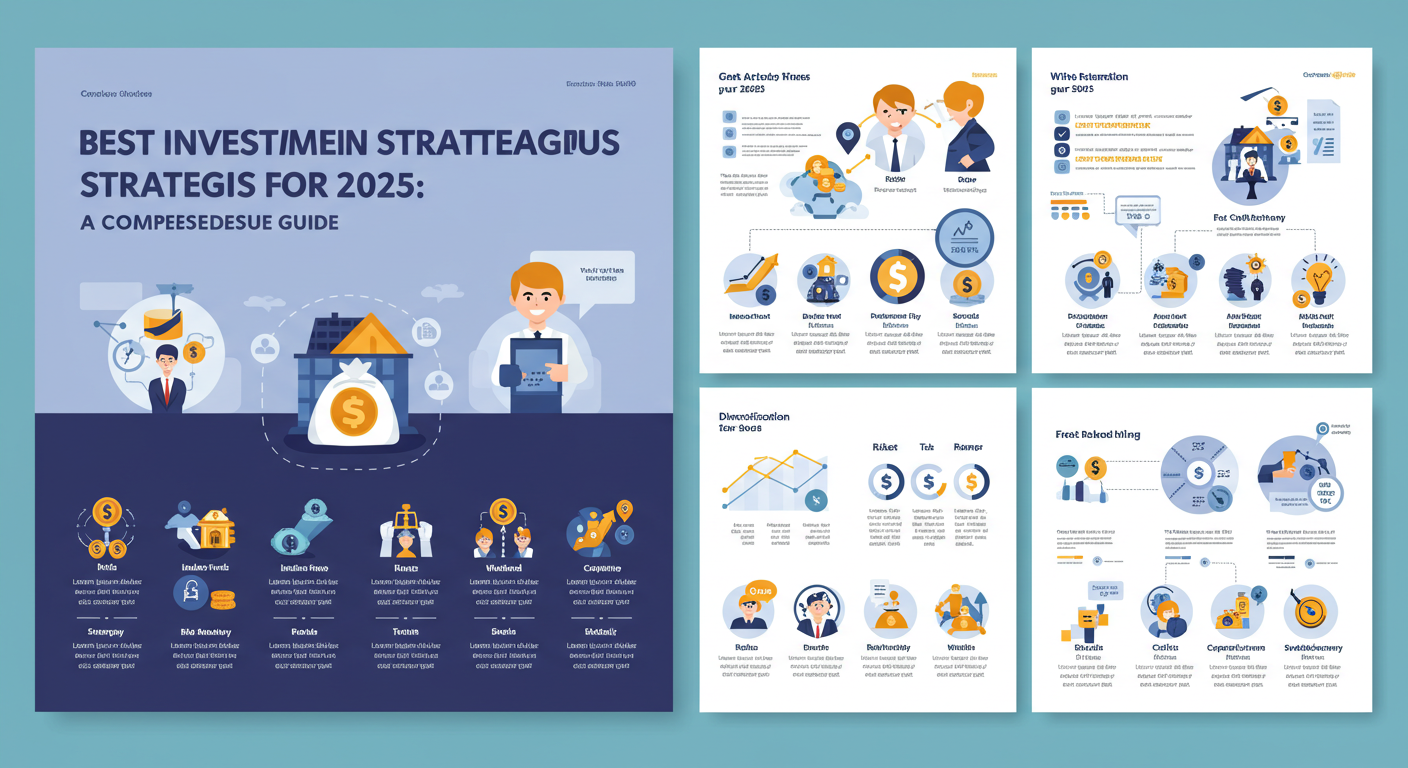Best Investment Strategies for 2025: A Comprehensive Guide
Understanding Market Trends
Analyzing market trends is the first step toward making wise investment decisions in 2025. Investors should closely monitor various indicators, including interest rates, inflation, and technological advancements, as these influence market performance. Historical data and predictions from credible financial analysts can provide insight into potential economic shifts. Tools like technical analysis and fundamental analysis will assist in making data-driven decisions.
Key Trends to Watch:
- Digital Currency & Blockchain: Cryptocurrency has moved from speculative assets to mainstream investments. Regulations and institutional investments in blockchain technology will likely impact the market significantly.
- Interest Rates: Central banks worldwide are evaluating their monetary policies. Rising interest rates may slow down consumer spending but could present opportunities in sectors sensitive to borrowing costs.
- Sustainability and ESG: Environmental, social, and governance (ESG) investing continues to gain traction. Companies that prioritize sustainability are expected to outperform their peers.
Diversification: A Pillar of Risk Management
Diversification remains essential for managing risk in any investment portfolio. By distributing investments across various asset classes—such as stocks, bonds, real estate, and commodities—investors can reduce their exposure to any single asset’s volatility. A well-diversified portfolio can enhance returns while mitigating risk.
Types of Diversification:
- Asset Class Diversification: Invest in a mix of stocks, bonds, and alternative investments like real estate or commodities.
- Geographical Diversification: Consider international investments to hedge against domestic market downturns.
- Sector Diversification: Spread investments across different sectors, like technology, healthcare, and consumer goods, to avoid sector-specific risks.
Embracing Technological Advancements
The rapid evolution of technology will create new opportunities for forward-looking investors. In 2025, sectors such as artificial intelligence, renewable energy, and biotechnology are expected to explode.
Technology Investment Strategies:
- Invest in Tech ETFs: Rather than selecting individual stocks, exchange-traded funds (ETFs) targeting specific tech sectors can provide broad exposure.
- Evaluate Startups: As venture capital continues to flow into tech startups, consider participating in crowdfunding platforms or venture capital funds focused on emerging technologies.
- AI and Automation: Companies integrating artificial intelligence into their operations will have a competitive edge. Identify firms leading in AI research and implementation.
Real Estate: A Tangible Asset Class
Real estate remains a popular investment strategy for 2025. With rising inflation, real estate often serves as a hedge against inflation. Properties can appreciate significantly in value over time, making them a worthwhile investment.
Real Estate Strategies:
- REITs (Real Estate Investment Trusts): Investing in publicly traded REITs offers exposure to real estate without the need for property management. Choose REITs focused on commercial, residential, or industrial properties based on economic cycles.
- Buy-and-Hold Strategy: The buy-and-hold real estate strategy offers long-term stability and appreciation. This view is particularly effective in areas experiencing rapid population growth.
- Short-Term Rentals: With the growth of platforms like Airbnb, short-term rental investments can yield high returns, especially in tourist-heavy cities.
Bonds: Stability in Uncertain Times
Bonds can provide a steady income stream and help balance the risk in an investment portfolio. In 2025, investors might want to evaluate different types of bonds, including municipal, corporate, and treasury bonds.
Bond Investment Insights:
- Duration Strategy: Understand bond duration to manage interest rate risk; longer-duration bonds may yield higher returns but also expose investors to greater risks if interest rates rise.
- Inflation-Linked Bonds: Consider inflation-protected securities like TIPS (Treasury Inflation-Protected Securities) to mitigate inflation risks.
- Corporate Bonds: Evaluate high-yield corporate bonds from established companies to capture better returns, though with added risk.
Incorporating Alternative Investments
Alternative investments, such as hedge funds, private equity, and commodities, may offer diversification benefits and potential returns not correlated with traditional asset classes.
Alternative Investment Options:
- Commodities: Investing in physical assets like gold, silver, or agricultural products can provide a hedge against inflation and currency fluctuations.
- Cryptocurrency Exposure: Allocate a small percentage of your portfolio to cryptocurrencies, focusing on major players like Bitcoin and Ethereum to potentially capture significant upside.
- Cryptocurrency ETFs: Similar to technology ETFs, cryptocurrency ETFs allow for easier and less risky investment in the space.
Understanding Behavioral Finance
Behavioral finance emphasizes investor psychology behind market movements. Understanding cognitive biases—like overconfidence or loss aversion—can help investors make more rational decisions and avoid common pitfalls.
Behavioral Strategies:
- Set Clear Goals: Define specific investment goals based on time horizons and risk tolerance to steer disciplined investment choices.
- Regular Reviews: Consistently review and adjust the portfolio to align with personal and economic circumstances. Perform checks bi-annually or annually.
- Limit Emotional Decision-Making: Employ strategies that reduce the impact of emotions in investing decisions, such as sticking to a predefined allocation strategy.
Investing in Index Funds
Index funds continue to attract attention due to their passive investment approach and low fees. They provide broader market exposure with lower management costs than actively managed funds.
Index Fund Advantages:
- Consistency and Stability: Index funds tend to maintain performance relative to the market over time, providing investors with consistent returns.
- Low Cost: The expense ratios of index funds are generally lower than actively managed funds, which means more capital is working for you.
- Tax Efficiency: Due to their passive nature, index funds typically generate fewer taxable events than actively traded investments.
Staying Informed and Adaptive
Investment in today’s fast-paced market requires awareness and adaptability. Following economic indicators, financial news, and market changes is crucial to evaluating and adjusting investment strategies.
Staying Engaged:
- Use Technology: Leverage financial apps and platforms for real-time data, news alerts, and portfolio analysis.
- Educate Yourself: Read books, attend seminars, or take courses on investment strategies and market analysis.
- Network with Professionals: Join investment clubs or forums to share insights and strategies with other investors.
Conclusion
While planning investments for 2025, incorporating the outlined strategies can ensure a balanced portfolio that aligns with both market opportunities and personal financial goals. Investing is not just about picking the right assets; it’s about understanding the market, knowing oneself, and being willing to adapt.




